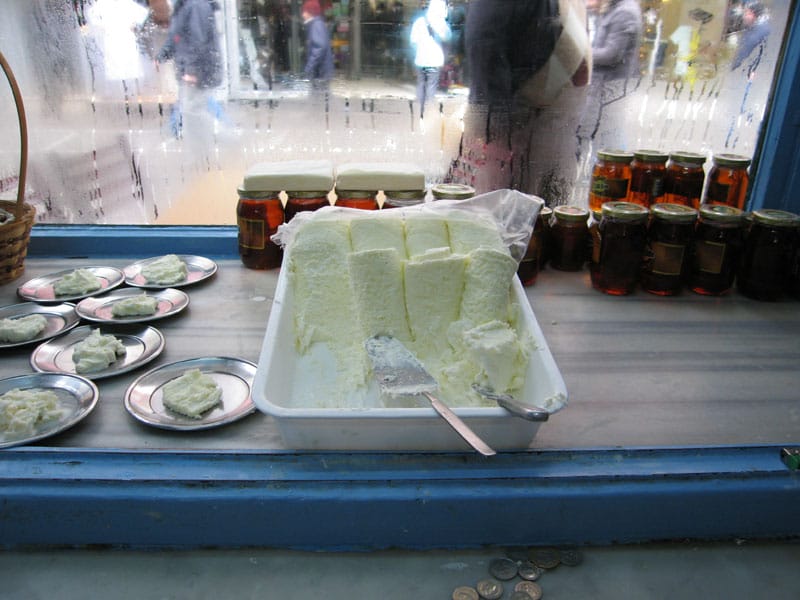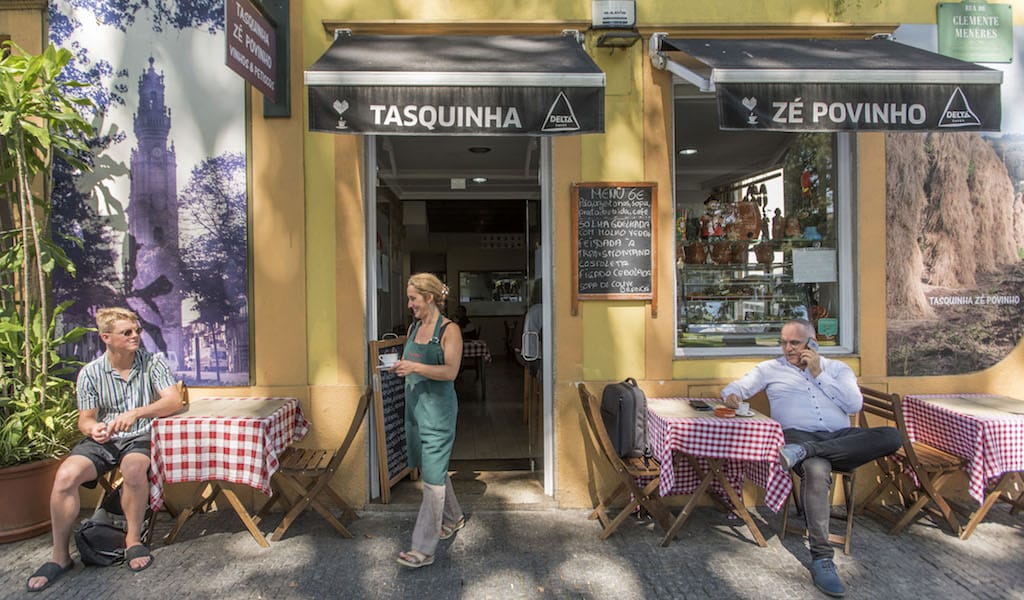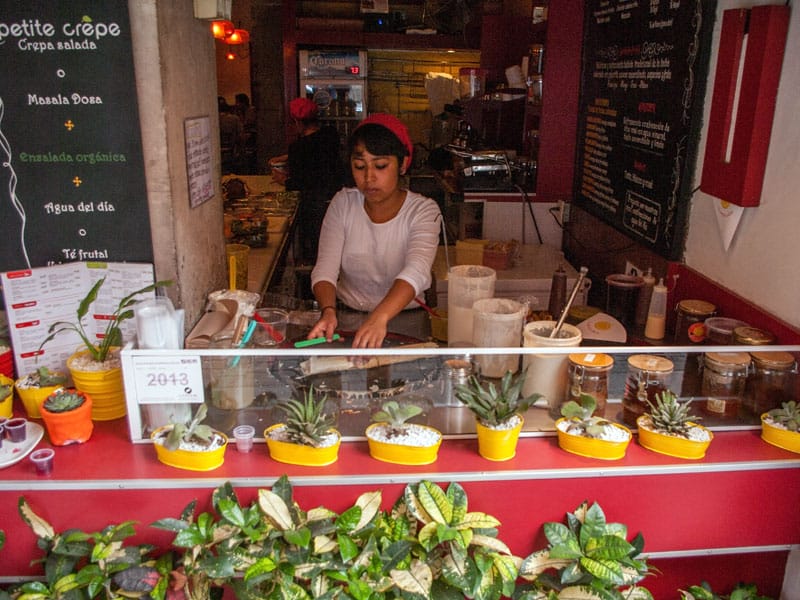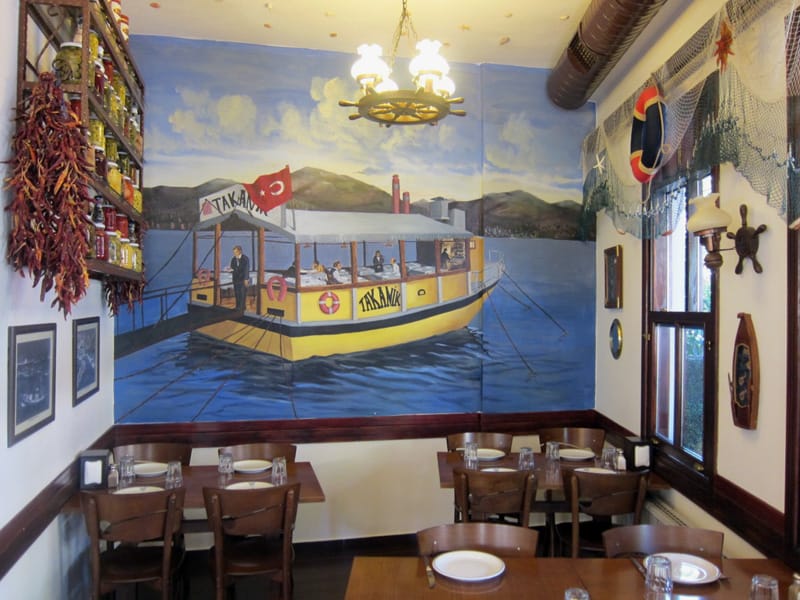Editor’s note: We are profoundly sad to report that Beşiktaş Kaymakçı has closed.
In our imagination, kaymak – the delicious Turkish version of clotted cream – is the only food served in heaven, where angels in white robes dish out plate after plate of the cloudlike stuff to the dearly departed, who no longer have to worry about cholesterol counts and visits to the cardiologist.
Perhaps we’re getting carried away, but kaymak can do that to you. For our money, the classic Turkish combo of kaymak served with honey and crusty white bread is one of the finest breakfasts anywhere.
The stuff is glorious, but simple. Milk – preferably from domesticated water buffaloes, known as “manda” in Turkish – is slowly boiled until a thick layer of very rich, pure, white cream forms at the top. After it cools, the kaymak is rolled up into little logs that have a consistency that hovers somewhere in between liquid and solid, with a creamy taste that’s both subtle and rich at the same time.
The stuff is also quite delicate, with a shelf life of barely one day. Still, purists refuse to refrigerate it, lest it lose its texture and pick up any refrigerator odors. Like we said, kaymak can make people get carried away.
Two of our favorite places to try kaymak are:
Beşiktaş Kaymakçı – This tiny shop/eatery has been in business since 1895, and it certainly shows its age. The marble counter is cracked and the paint on the walls peeling. But the kaymak, served up by the 84-year-old Pando, a living institution in Istanbul’s untouristed Beşiktaş bazaar, is out of this world. Prices here also seem unchanged since 1895: a plate of kaymak and honey, served with fresh bread and a glass of steaming hot milk, will set you back 4 lira.
Karaköy Özsüt – Compared to Pando in Beşiktaş, this place – open since 1915 – is a relative newcomer to the kaymak scene. Located on Istiklal Caddesi, Özsüt also serves up very good kaymak (as well as yogurt and rustic cheeses) made from the restaurant’s own herd of water buffaloes, whose pictures grace the walls.
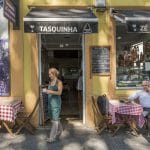 October 4, 2021 Tasquinha Zé Povinho
October 4, 2021 Tasquinha Zé Povinho
When the late 19th-century Portuguese artist and cartoonist Rafael Bordalo Pinheiro […] Posted in Porto May 9, 2013 La Petite Crepe
May 9, 2013 La Petite Crepe
Update: This spot is sadly no longer open.
As diverse Mexican food is, there are […] Posted in Mexico City July 30, 2012 Fish in Istanbul
July 30, 2012 Fish in Istanbul
In the evolutionary process of the Istanbul fish restaurant, there was a moment in the […] Posted in Istanbul
Published on May 20, 2014
Related stories
October 4, 2021
PortoWhen the late 19th-century Portuguese artist and cartoonist Rafael Bordalo Pinheiro wanted to create a vehicle through which to mock and criticize the country’s powerful elite, he settled upon the character Zé Povinho, an unsophisticated country laborer who served as a stand-in for the average citizen. While some Portuguese people took umbrage with their country’s…
May 9, 2013
Mexico City | By Ben Herrera
Mexico CityUpdate: This spot is sadly no longer open. As diverse Mexican food is, there are times when we just have a craving for something different, which is why we were delighted recently to discover La Petite Crepe in the Centro Histórico, a tiny eatery producing delicious crepes and tasty beverages with an international pedigree. Owner…
July 30, 2012
IstanbulIn the evolutionary process of the Istanbul fish restaurant, there was a moment in the late 1990s when the amphibious, shore-hugging boat restaurants crawled out of the Bosphorus and became land dwellers. Overnight, yellow Wellington boots became black loafers as seafaring grill men became restaurateurs and waiters. Some rue the day the municipality cleared the…







































